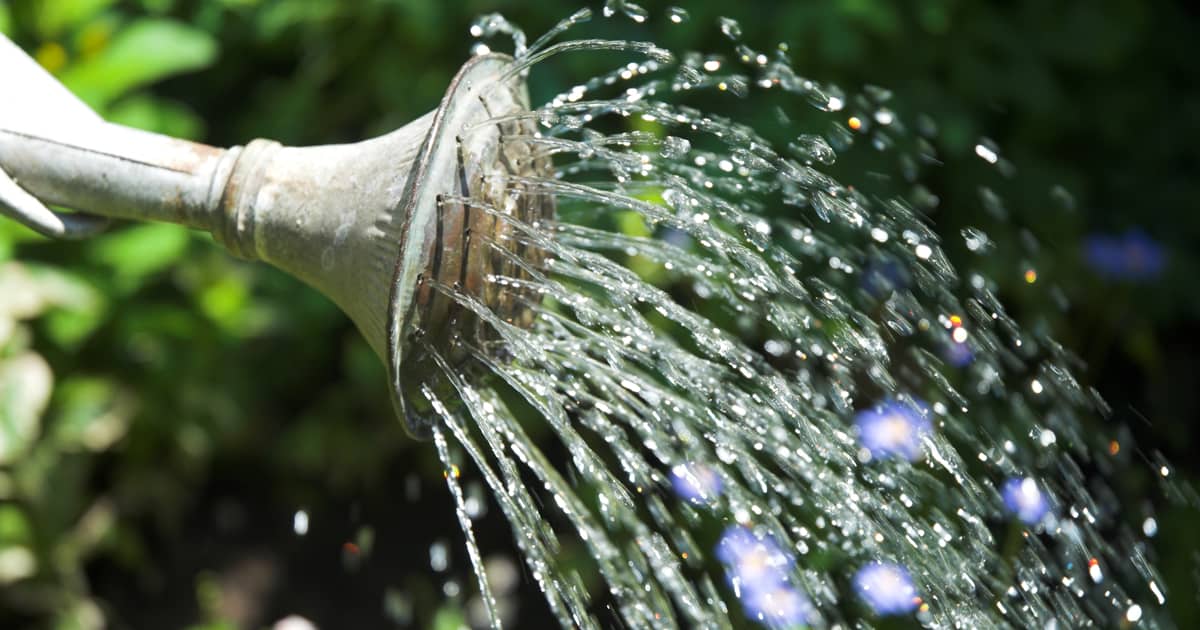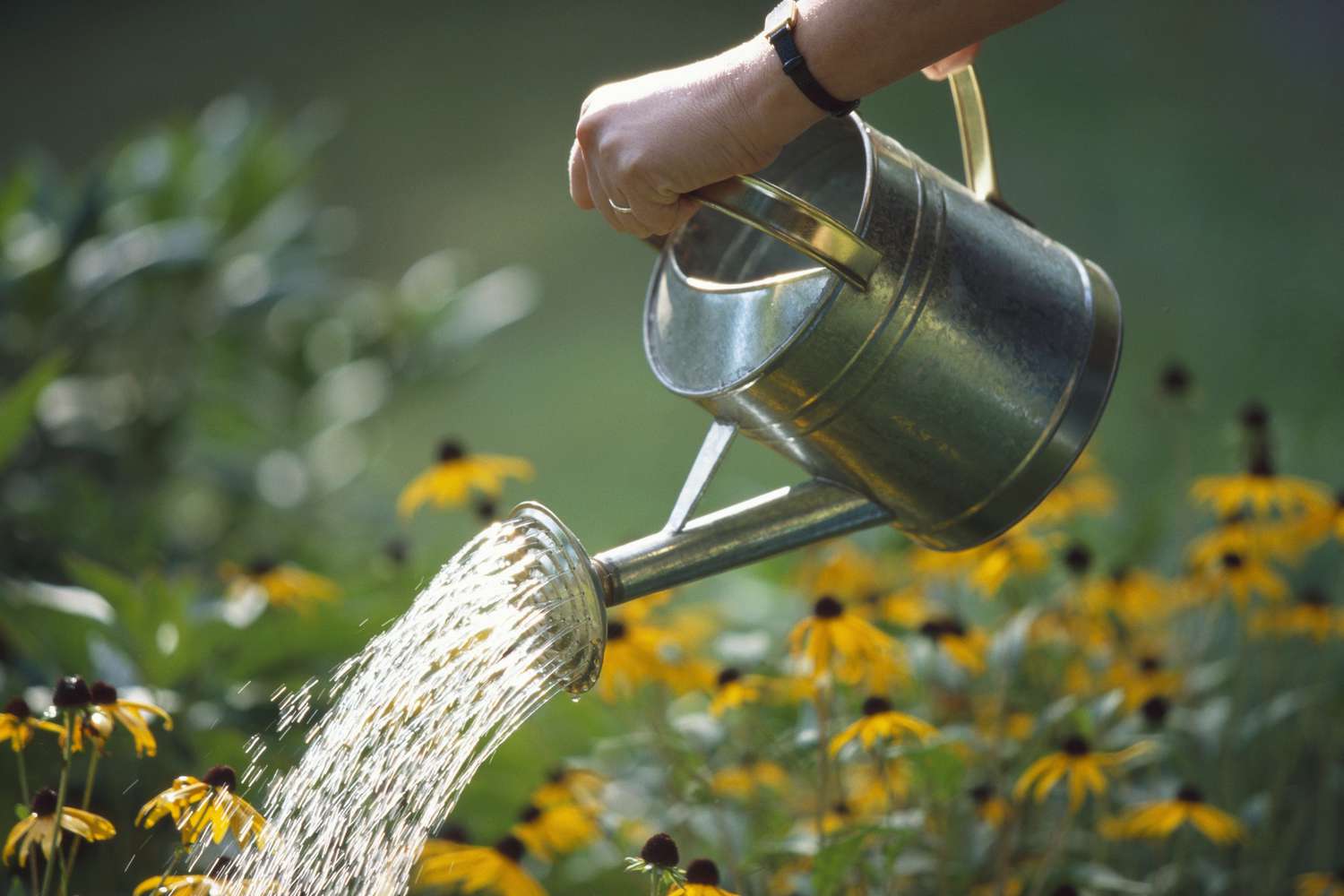As an Amazon Associate, I earn from qualifying purchases.
Water outdoor plants in summer every 1-3 days, depending on the plant type and weather conditions. Ensure soil stays moist but not waterlogged.
Summer heat can be tough on outdoor plants. Proper watering is crucial for their health and growth. Different plants have varying water needs. Some require daily watering, while others need it less frequently. Factors like soil type, plant variety, and weather conditions influence watering frequency.
Early morning or late evening are ideal times to water, reducing evaporation. Consistent watering helps plants thrive and resist drought stress. Monitoring soil moisture and adjusting your routine ensures plants receive the right amount of water. This guide will help you keep your outdoor garden flourishing through the summer heat.
Importance Of Proper Watering
Proper watering is crucial for outdoor plants in summer. It helps plants stay healthy and grow well. Without enough water, plants can wilt and die. Too much water can also harm them. Knowing the right way to water plants is essential.
Impact On Plant Health
Watering impacts plant health significantly. Proper watering helps plants absorb nutrients from the soil. It keeps the roots strong and healthy. Well-watered plants produce more flowers and fruits. They also resist pests and diseases better.
Avoiding Overwatering
Overwatering is harmful to plants. It can cause roots to rot. Plants need air in the soil to breathe. Too much water fills air spaces in the soil. This makes it hard for roots to get oxygen. Signs of overwatering include yellow leaves and mushy stems. To avoid overwatering, check the soil before watering. If the soil is wet, wait a day or two before watering again.
| Signs of Overwatering | Signs of Underwatering |
|---|---|
| Yellow leaves | Dry, brown leaves |
| Mushy stems | Wilted plants |
| Moldy soil | Cracked soil |
Use a watering schedule to maintain proper moisture. Water plants early in the morning. This reduces water loss due to evaporation. It also helps prevent fungal diseases.
- Check soil moisture regularly.
- Water deeply but less frequently.
- Mulch the soil to retain moisture.
Following these tips ensures your outdoor plants thrive in summer. Proper watering keeps them healthy and beautiful.

Credit: southernlivingplants.com
Factors Influencing Watering Frequency
Watering outdoor plants in summer depends on various factors. Understanding these factors helps ensure your plants stay healthy and vibrant. Below are key elements to consider.
Soil Type
Soil type affects how often you need to water plants. Sandy soil drains water quickly, so you need to water more often. Clay soil holds water longer, reducing the need for frequent watering.
| Soil Type | Watering Frequency |
|---|---|
| Sandy | More often |
| Clay | Less often |
Climate Conditions
Climate conditions play a big role in watering frequency. Hot and dry climates require more frequent watering. In humid or cooler areas, plants need less water.
- Hot and dry: Water daily or every other day.
- Cool and humid: Water every few days or weekly.
Keeping an eye on weather forecasts can also help. Rainy days reduce the need to water your plants. Sunny and windy days increase the need for watering.
Identifying Plant Water Needs
Knowing how often to water outdoor plants in summer is crucial. Different plants have unique water needs. Observing signs of thirsty plants and soil moisture helps determine the right watering schedule.
Signs Of Thirsty Plants
Plants show several signs when they need water. Here are some key indicators:
- Wilting leaves: Leaves may droop or curl.
- Yellowing leaves: Leaves might turn yellow or brown.
- Dry soil: Soil appears dry and cracks easily.
- Slow growth: Plants grow slower than usual.
Observing Soil Moisture
Checking soil moisture is essential for understanding plant water needs. Here are some methods:
- Finger test: Insert a finger into the soil up to 2 inches. If the soil feels dry, it’s time to water.
- Soil moisture meter: Use a moisture meter to get an accurate reading.
- Visual inspection: Look for soil color changes. Dry soil is lighter in color.
By observing these signs, you can ensure your plants remain healthy and vibrant throughout summer.

Credit: www.plantmegreen.com
Best Time To Water
Finding the best time to water your outdoor plants in summer is crucial. Proper watering can keep your plants healthy and vibrant. Timing plays a significant role in ensuring your plants get the moisture they need without wasting water.
Morning Vs Evening
Watering your plants in the morning is generally the best option. Morning watering allows plants to absorb moisture before the heat of the day. This helps them stay hydrated through the hottest hours.
Evening watering is also a good option but comes with a caveat. Watering at night can leave plants wet for too long, which may lead to fungal diseases. If you choose to water in the evening, do it early enough for the leaves to dry before nightfall.
Avoiding Midday Heat
The midday heat is the worst time to water your plants. Watering during peak heat hours can lead to quick evaporation, wasting water and providing little benefit to your plants. Additionally, water droplets on leaves can act like magnifying glasses and cause leaf burn.
Stick to watering early in the morning or later in the evening. This ensures your plants get the most benefit from the water you provide.
| Time of Day | Pros | Cons |
|---|---|---|
| Morning | Best absorption, plants stay hydrated longer | None |
| Evening | Cooler temperatures, less evaporation | Risk of fungal diseases |
| Midday | None | High evaporation, leaf burn |
Watering Techniques
Watering your outdoor plants in summer can be challenging. Different methods ensure your plants get the right amount of water. Using the right watering techniques is crucial for plant health.
Drip Irrigation
Drip irrigation is a highly efficient watering method. It delivers water directly to the plant roots. This minimizes water loss due to evaporation. Drip irrigation systems consist of a network of tubes. These tubes have small holes that release water slowly.
- Conserves water
- Reduces weed growth
- Prevents water runoff
To set up a drip irrigation system, follow these steps:
- Plan the layout of your garden.
- Install main tubing along plant rows.
- Attach emitters near each plant base.
- Connect the system to a water source.
Drip irrigation systems are easy to maintain. Check the emitters regularly to ensure they aren’t clogged. This method ensures consistent moisture levels.
Soaker Hoses
Soaker hoses are another effective watering technique. These hoses are porous and allow water to seep out slowly. Lay the soaker hose around the plants’ base. This method ensures even water distribution.
| Benefits | Considerations |
|---|---|
| Easy to install | Can clog over time |
| Water-saving | Needs regular checks |
| Reduces evaporation | Placement is crucial |
Using soaker hoses is simple. Lay them out in your garden beds. Cover them with mulch to retain moisture. Connect the soaker hose to a water source. Turn on the water and let it flow slowly. The plants will get a deep, thorough watering.
Soaker hoses work well for vegetable gardens and flower beds. They are flexible and can be moved as needed. Ensure the hose is not twisted or kinked to maintain water flow.
Adjusting For Different Plants
Summer can be tough on outdoor plants, especially with the heat. Knowing how often to water your plants is crucial. Different plants have different needs. Adjusting your watering routine can help them thrive.
Flowering Plants
Flowering plants are usually thirsty during summer. They need consistent moisture to bloom well. Water them deeply to ensure roots get enough water. A general rule is to water every other day. This helps keep the soil moist.
Here is a simple table to guide you:
| Flower Type | Watering Frequency |
|---|---|
| Roses | Every 2 days |
| Sunflowers | Twice a week |
| Daisies | Every 3 days |
Tip: Use mulch to retain soil moisture. This helps reduce evaporation.
Vegetable Gardens
Vegetable gardens need careful watering during summer. Different vegetables have different needs. For example, tomatoes need more water compared to carrots.
Here is a quick watering guide:
- Tomatoes: Water daily in the morning.
- Carrots: Water every 3 days.
- Lettuce: Water every other day.
Water the base of the plants to avoid wetting the leaves. Wet leaves can cause diseases. Use drip irrigation systems for best results.
Remember, the goal is to keep the soil consistently moist. Overwatering can be as harmful as underwatering. Always check the soil before watering. Stick a finger in the soil up to 2 inches. If it feels dry, it’s time to water.
Conserving Water
In summer, conserving water is crucial for outdoor plants. Using less water saves money and helps the environment. Here are some effective methods to conserve water while keeping your plants healthy.
Mulching
Mulching helps retain soil moisture and reduces evaporation. It also keeps the soil cool, which is important in hot summer months. You can use organic materials like straw, wood chips, or leaves as mulch.
Apply a 2-3 inch layer of mulch around your plants. Ensure the mulch doesn’t touch the plant stems. This prevents rot and disease. Mulching also reduces weeds, which compete for water with your plants.
Using Rain Barrels
Rain barrels are great for collecting and storing rainwater. They provide a free, sustainable water source for your garden. Place the barrel under a downspout to capture rainwater from your roof.
Use the collected water during dry spells. This reduces the need for tap water. Rainwater is also beneficial for plants because it is free of chemicals found in tap water.
| Method | Benefits |
|---|---|
| Mulching | Retains soil moisture, reduces evaporation, cools soil, and suppresses weeds. |
| Using Rain Barrels | Provides free water, reduces tap water use, and contains no chemicals. |
Common Watering Mistakes
Watering outdoor plants in summer can be tricky. Many gardeners make mistakes. These mistakes can harm plants. Let’s explore the common watering mistakes.
Watering Too Frequently
Many people water plants too often. This can cause root rot. Plants need time to dry out. Wet roots can’t breathe. This leads to unhealthy plants.
Signs of overwatering:
- Yellowing leaves
- Wilting despite wet soil
- Fungus or mold growth
Watering less often is better. Let the top inch of soil dry. Then water deeply. Deep watering helps roots grow strong.
Ignoring Plant Type
Not all plants need the same water. Some plants need more. Others need less. Knowing your plant type is key.
Here is a table to help:
| Plant Type | Watering Needs |
|---|---|
| Cacti | Very little water |
| Herbs | Regular, moderate water |
| Flowering Plants | Frequent, deep water |
Tip: Group plants by water needs. This makes watering easier. Your plants will thank you.
:max_bytes(150000):strip_icc()/GettyImages-523503376-c24de1aec7b349a2a542bb794a693572.jpg)
Credit: www.thespruce.com
Frequently Asked Questions
How Often Should I Water Outdoor Plants In Summer?
Water your outdoor plants deeply once or twice a week. Adjust based on rainfall and plant needs.
Can Overwatering Harm My Plants?
Yes, overwatering can harm plants. It leads to root rot and other diseases. Ensure proper drainage.
What Time Of Day Is Best For Watering?
Water your plants early in the morning. This reduces evaporation and helps plants absorb moisture efficiently.
How Do I Know If My Plants Need Water?
Check the soil moisture with your finger. If the top inch is dry, it’s time to water.
Conclusion
Watering outdoor plants in summer requires careful attention. Consistent hydration helps plants thrive in hot weather. Check soil moisture regularly to avoid overwatering. Adjust frequency based on plant type and local climate conditions. Proper watering ensures healthy, vibrant plants throughout the season.
Enjoy a lush garden all summer long with these simple tips.

